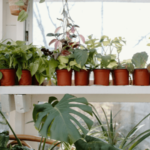Indoor Plants
Indoor plants are plant species that are grown inside homes, offices, or other enclosed spaces. These indoor plants are selected for their ability to thrive in indoor conditions where light, temperature, and humidity levels are controlled.
Indoor plants not only add natural and aesthetic appeal to indoor environments, but also provide many benefits, such as improving air quality, reducing stress, and enhancing well-being.
These indoor plants are selected for their ability to thrive in indoor conditions where light, temperature, and humidity levels are controlled. Indoor plants not only add natural and aesthetic appeal to indoor environments, but also provide many benefits, such as improving air quality, reducing stress, and enhancing well-being.
-
Snake Plant
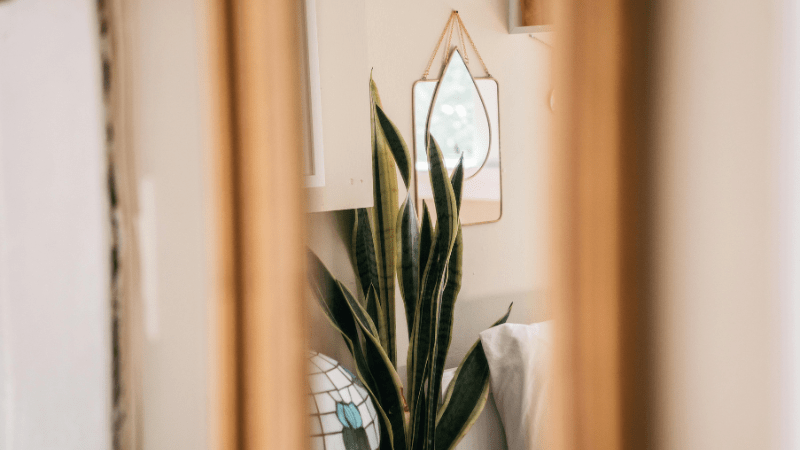
The snake plant, scientifically known as Sansevieria trifasciata, is a popular and resilient indoor plant, often known by many other names such as mother-in-law’s tongue and viper’s boosting hemp. Native to West Africa, this plant is highly prized for its ease of care, air-purifying properties, and stunning appearance.
Features:
Appearance: Snake plant has long, sword-like leaves that grow vertically. The leaves are usually green with horizontal stripes, although there are many varieties with different color patterns, including yellow or white margins.
Height: It can grow anywhere from a few inches to several feet tall, depending on the variety and care it receives.
Maintenance Requirements:
Light: Snake plants are highly adaptable and can tolerate light conditions ranging from low light to bright, indirect light. However, they grow best in indirect sunlight.
Watering: One of the main reasons for its popularity is its low water requirement. The plant is drought resilient because of the water storage found in its thick leaves, It is best to avoid overwatering since it can cause root rot. it is preferable to let the soil dry out in between watering.
Soil: A well-drained potting mix is ideal. Cactus or succulent soil works well for snake plants.
Temperature: They prefer warm temperatures and can tolerate a range of indoor conditions, but should be kept away from cold drafts or temperatures below 50°F (10°C).
Air Purification: the snake plant is well renowned for its capacity to filter the air According to a NASA study, it effectively removes toxins such as formaldehyde, benzene, and trichloroethylene from the air, making it an excellent choice for improving indoor air quality.
Advantages:
Low maintenance: Its ability to be overlooked makes it perfect for beginners or those with busy lifestyles.
Health: In addition to purifying the air, some believe that having a snake plant in the bedroom can improve the quality of sleep by releasing oxygen at night.
Cultural Significance:
In some cultures, the snake plant is considered a symbol of good luck and positive energy. It is often placed near entrances to protect the home from negative influences; it is essential for indoor plants.
Result:
The snake plant is a great choice for anyone who wants to add greenery to their home, especially indoor plants without the need for constant maintenance. Its toughness, combined with its aesthetic appeal and air-purifying properties, make it a staple in both modern and traditional space
-
Spider Plant
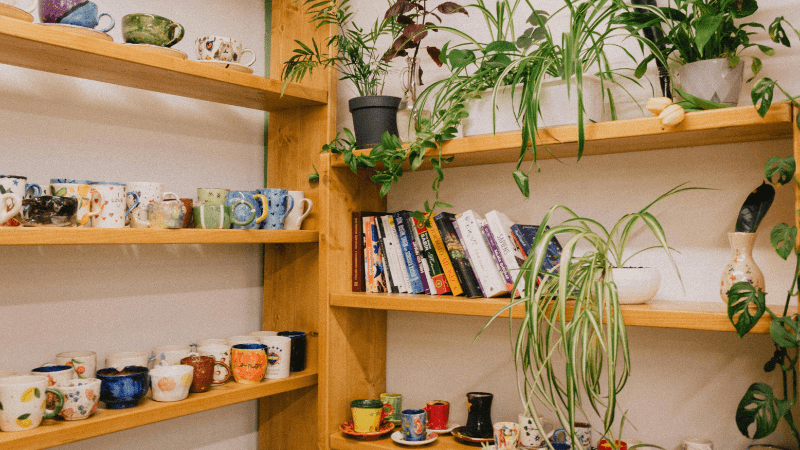
Spider plant, scientifically known as Chlorophytum comosum, is one of the most popular and easy-to-care-for indoor plants. It is known for its attractive, arching leaves and its ability to thrive in a variety of indoor environments. Native to South Africa, the spider plant is a favorite among new and experienced gardeners for its flexibility and air-purifying properties.
Features:
Appearance: The spider plant has long, thin, arching leaves that are usually green with a white or cream-colored stripe running down the middle. The plant produces tiny white flowers on tall stems, which eventually develop into “baby” plants, or saplings, that hang from the mother plant like spiders on a web. this plants helps beauty in indoor plants.
Growth: Spider plants grow quickly and can reach a height of 12-15 inches. The trailing stems can be stretched forward, giving the plant a cascading effect that makes it ideal for hanging baskets or as a tabletop plant.
Light: Spider plants thrive in bright, indirect light but also tolerate low-light conditions, sunlight should not be allowed to touch them as it can burn their leaves. Watering: These plants prefer to be evenly moist, but not waterlogged, giving the special view of indoor plants.
between watering, let the top inch of soil dry it, They are relatively drought tolerant and can survive short periods of neglect.
Soil: A well-draining, all-purpose potting mix works well for spider plants; they like their soil to be slightly acidic
Temperature: Spider plants do well in average indoor temperatures, ideally between 55°F and 80°F (13°C – 27°C). They should be kept away from cold drafts and cold conditions.
Spider plants are excellent air purifiers, known for their ability to remove toxins such as formaldehyde, xylene, and toluene from the air. This makes them a great addition to indoor plants, contributing to healthy indoor air quality.
Easy Propagation: One of the most appealing aspects of spider plants is how easy they are to propagate. Plants developed from the main plant can be cut and rooted in soil or water, making it easier to grow new plants.
Pet Friendly: Spider plants are non-toxic to pets, making them a safe choice for households with cats and dogs.
Decorative Versatility: Their attractive, cascading foliage makes spider plants a versatile decorative element. They can be used in hanging baskets, or pots or mixed with other plants for attractive indoor plants.
Cultural Significance:
In some cultures, the spider plant is associated with good health, prosperity and the ability to ward off evil spirits. It is often given as a gift to bring good luck to new homes or businesses
-
Peace Lily
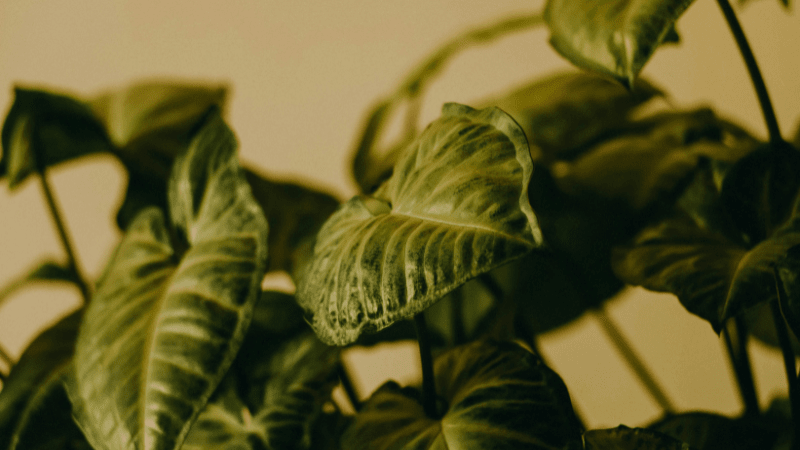
The Peace Lily (Spathiphyllum) is a popular and beautiful indoor plant known for its lush, dark green leaves and striking white flowers. Often associated with peace and tranquility, this plant is a favorite among plant enthusiasts for its beauty, low-maintenance nature, and air-purifying abilities.
Appearance: Peace lilies have broad, glossy, dark green leaves that can grow up to 16 inches long. The plant’s most distinguishing feature is its white, sail-shaped flowers, called spathes, which surround a central spike called a spadix. These flowers usually bloom in spring and can last for several weeks.
Growth: Peace lilies are relatively compact, usually about 1-3 feet tall, making them ideal for small spaces such as apartments, and offices, or as centerpieces on tables.
Although they can withstand low light levels, peace lilies prefer bright, indirect light
However, they should be kept out of direct sunlight, which can burn their leaves. In low light, the plant may produce fewer flowers, but it will still thrive and give good look to indoor plants.
Watering: Peace lilies like their soil to be consistently moist but not waterlogged. when the earth seems dry in the top inch, water them, These plants are known for their drooping leaves when they need water, which return after watering.
Soil: A well-draining potting mix is essential for peace lilies. They do well in a peat-based soil mix that retains moisture but allows excess water to drain.
Temperature: the ideal range for peace lilies to grow is between 65°F and 80°F (18°C and 27°C)
They prefer humid environments and should be kept away from cold drafts and temperatures below 55°F (13°C).
Air Purification:
Peace lilies are known for their ability to improve indoor air quality. They are particularly effective in removing air pollutants such as benzene, formaldehyde, trichloroethylene, ammonia, and xylene. This makes them a great addition to bedrooms, living rooms, indoor plants or offices where air quality is a concern.
Low maintenance: Peace lilies are easy to care for, making them a great choice for beginners or those with busy lifestyles. They can tolerate drought and will indicate when they need water by dropping their leaves.
Flowering House Plant: Unlike many other indoor plants, the peaceful lily produces beautiful flowers, adding elegance and natural beauty to any indoor space.
Pet Precautions: Peace lilies are beautiful but toxic to pets if eaten. Pet owners should keep them out of the reach of curious animals.
Cultural Significance:
The peace lily is often associated with peace, purity, and compassion. It is commonly used in sympathetic arrangements and is believed to bring peace and tranquility to a place. In some cultures, peace lilies are also seen as symbols of prosperity and harmony as far as indoor plants concern this is one of the best concerns.
Brown leaf tips: This is usually a sign of overwatering, low humidity, or exposure to direct sunlight. Adjust watering habits and make sure the plant is in the right environment.
Yellow leaves: If the leaves turn yellow, it may indicate overwatering or poor drainage. Make sure the plant is not sitting in water and that the soil is well-draining.
Aloe vera
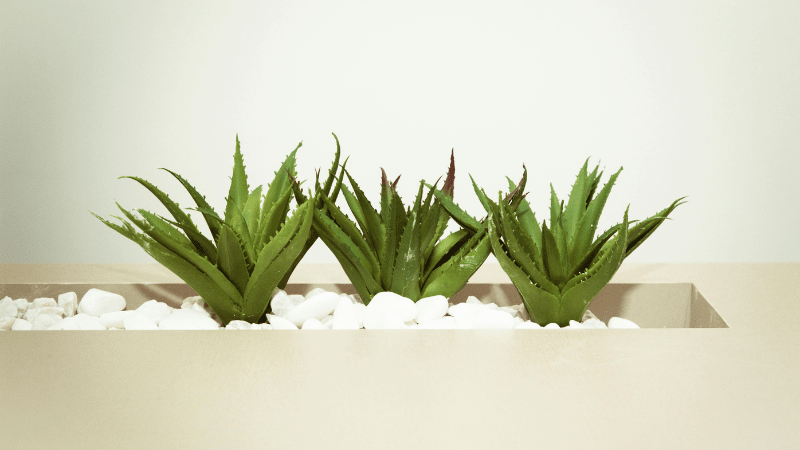
is a well-known and widely used succulent plant known for its medicinal properties, easy care, and versatility. With its thick, fleshy leaves that store water and gel, aloe vera has been used for centuries for its healing and skin care, benefits, making it a staple in many households.
Appearance: Aloe vera has thick, sharp, greenish-gray leaves that grow in a rosette. The leaves are fleshy and contain a clear, gel-like substance that is rich in vitamins, enzymes, amino acids, and other compounds. The plant can produce small, tubular yellow or orange flowers on tall spikes, although it rarely blooms indoor plants.
Size: Aloe vera is a relatively compact plant, usually 1 to 2 feet tall. It fits well in small spaces, including windowsills, tables, and countertops.
Medical and skin care benefits:
Aloe Vera Gel: The inner gel of the aloe vera leaf is commonly used for its soothing and healing properties. It is known for its ability to treat minor burns, sunburns, cuts, and skin irritations. The gel is also used in a variety of cosmetic and skin care products for its moisturizing and anti-inflammatory properties.
Aids digestion: Aloe vera juice is sometimes drunk for digestive health, as it is believed to help with problems such as constipation and indigestion. However, it must be used with caution as excessive use may cause adverse effects.
Maintenance Requirements: Light: Aloe vera thrives in bright, indirect sunlight. It prefers sunny spots like a window where it can get plenty of light. However, too much direct sunlight can cause leaves to brown or scorch.
Watering: Being a succulent, aloe vera needs minimal watering. It prefers to dry out completely between waterings. Overwatering can cause root rot, so it’s best to water every few weeks depending on the climate and humidity levels.
Soil: Aloe vera needs well-draining soil, such as cactus or succulent potting mix. Plant roots should never sit in water, so it is important to use a pot with drainage holes.
Temperature: Aloe vera does best in a temperature range of 55°F to 80°F (13°C – 27°C). It is sensitive to frost and should be kept indoors during the colder months if you live in an area with cold winters.
Air Purifier Features:
In addition to its medicinal uses, aloe vera is also known for its air-purifying abilities. Like many other surfactants, it helps remove pollutants like formaldehyde and benzene from the air, improving indoor air quality.
Advantages:
Low maintenance: Aloe vera is one of the easiest plants to care for, making it ideal for beginners or busy people. It requires very little water and thrives in a variety of light conditions, including indirect sunlight.
Healing plant: Aloe vera is often called the “plant of immortality” because of its medicinal properties. Its gel can be applied directly to the skin to heal burns, cuts, and other minor injuries, and is a natural treatment for various skin conditions.
Indoor and outdoor flexibility: While aloe vera is usually grown indoors, it can also be grown outdoors in warmer climates. It is an attractive plant for both home decoration and gardens.
Common problems:
Overwatering: Aloe vera is prone to root rot if overwatered. Make sure the soil dries out completely between waterings and that the pot has drainage holes.
Insects: While aloe vera is generally resistant to insects, it can occasionally attract insects such as mealybugs or aphids. Inspect the plant regularly and treat infestations promptly with natural insecticides or by wiping the leaves with rubbing alcohol.
Cultural Significance:
Symbolism: Aloe vera is often seen as a symbol of healing and protection. Its long history of medicinal use has placed it as a sacred or magical plant in various cultures.
Historical Uses: Aloe vera has been used for thousands of years by ancient civilizations, including the Egyptians, Greeks, and Romans, for its healing properties. It was also called the “plant of immortality” by the ancient Egyptians and is believed to have been used by Cleopatra in her beauty regimen
Rubber Plant
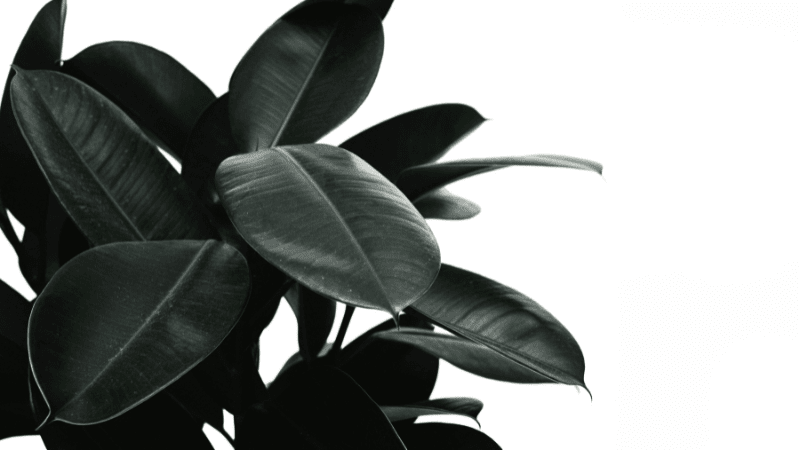
- (Ficus elastica) is a popular indoor plant known for its stunning appearance, ease of maintenance, and air-purifying properties. With its broad, glossy, dark green leaves and impressive height capacity, it adds a bold touch to any indoor space.
- Originating from Southeast Asia, this plant can thrive indoors with minimal maintenance, making it a favorite among houseplant enthusiasts. Features:
Appearance: The rubber plant is characterized by its large, oval-shaped, glossy leaves that range from dark green to burgundy depending on the variety. The leaves have a leathery texture and can be quite large, sometimes up to 12 inches long.
- New leaves appear in reddish sheaths, adding color to the plant.
Size: When grown indoors, the rubber plant typically reaches a height of 6 to 10 feet, although it can grow taller under optimal conditions. Outdoors, in its native habitat, - it can grow 50 to 100 feet tall. Its upright growth habit makes it an excellent choice for filling vertical space in a room.
- Air Purifier Features:
One of the salient features of a rubber plant is its ability to improve indoor air quality, and gives fresh view to indoor plants . Like other members of the ficus genus, it has been shown to filter airborne toxins such as formaldehyde, carbon monoxide, and other volatile organic compounds (VOCs). It is not only an attractive addition to your home but also a practical one to improve air purity. - Light: Rubber plants thrive in bright, indirect light but can tolerate low-light conditions. However, for optimal growth and leaf color, it is best to place them in a location with indirect sunlight. overexposure to direct sunlight may cause burned leaves Watering:
- These plants prefer consistently moist soil, but they don’t like sitting in water. Allow the top inch or two of soil to dry out between waterings to prevent root rot. Overwatering is a common problem with rubber plants, so maintaining a balance is critical.
- Soil: A well-draining potting mix is essential for rubber plants. A standard indoor plant mix works well, but you can also add some perlite or sand for better drainage.
- Temperature: Rubber plants prefer warm, humid conditions with temperatures between 60°F to 85°F (16°C to 29°C). They are sensitive to cold drafts, so it is important to keep them away from windows and doors that can expose them to cold air.
- Humidity: Although the rubber plant can tolerate average household humidity, it thrives in high humidity levels. Regular dusting or placing the plant near a humidifier can help maintain its glossy leaves
- Low maintenance: Rubber plants are relatively easy to care for, making them suitable for both beginners and experienced plant owners. They can tolerate a range of light conditions and do not require frequent watering.
- Air Purification: Rubber plants are excellent natural air purifiers, removing toxins and pollutants from the indoor air, and contributing to a healthy home environment.
- Visual impact: The rubber plant’s large, glossy leaves and upright growth make it a visually stunning addition to any room. It adds a modern, elegant touch to both homes and offices.
- Ficus elastica ‘Robusta’: Known for its large, dark green leaves, this variety is the most common and easy to find.
- Ficus elastica ‘Burgundy’: This variety has almost black leaves with a deep burgundy tint, making it a wonderful choice for those looking for a more dramatic plant.
- Ficus elastica ‘Tineke’: A variegated version with cream, green, and pink leaves, this variety adds a pop of color to indoor plant combinations.
- Common problems:
Leaf Drop: Rubber plants may drop leaves if they are exposed to drafts, sudden changes in temperature, or inconsistent watering. Keeping their environment stable is key to preventing leaf drop.
Insects:
- Although relatively resistant to insects, rubber plants can occasionally attract insects such as spider mites or scale. Regularly wiping leaves with a damp cloth and checking for insects can help prevent infestation.
- Overwatering: overwatering is a typical issue that can result in root rot. Make sure the soil dries out between waterings and the plant is in a pot with proper drainage
- Pruning: Rubber plants can be pruned to control their height and shape. Pruning encourages bush growth and helps maintain the desired plant size. Utilize a sharp, clean instrument at all times to prevent harming the plant.
- Leaf Cleaning: Because of their large surface area, rubber plant leaves can collect dust over time, which can block sunlight and reduce photosynthesis. Wipe the leaves regularly with a damp cloth to keep them clean and shiny.
- cultural importance
- symbolism: the rubber plant represents riches, abundance, and happiness in a variety of civilizations. It is a sign of readability and prosperity due to its durability and low maintenance needs.
- Historical Use: The main source of rubber, has essentially supplanted the rubber plant in the manufacture of natural rubber, which the industry has historically associated with this monk.
Conclusion
Indoor Plants: in addition to adding aesthetic value of your house, indoor plants have major positive effective on the environment and your health. these plants make a home feel fresher coizer while also cleansing the air and enhancing mental health. coizer
indoor Plants are more than simply decorative accents. they are necessary component for happy healthier household.
Snake plant (Sansevieria trifasciata): Known for its durability and air-purifying properties, the snake plant is a low-maintenance option that thrives in a variety of light conditions. It’s perfect for beginners and makes a great addition to any home or office.
Spider plant (Chlorophytum comosum): A popular choice for its beautiful appearance and ease of care, the spider plant is also excellent at removing toxins from the air, making it aesthetically pleasing and useful for indoor spaces.
Peace Lily (Spathiphyllum): With its brilliant white flowers and ability to thrive in low light, the peace lily adds beauty to any indoor environment. Its air-purifying properties and easy maintenance make it a favorite among indoor plant enthusiasts.
Aloe Vera: Known for its healing properties, aloe vera is not only a practical plant but also easy to care for. Its ability to survive dry conditions and its soothing gel makes it a versatile addition to your indoor garden.
Rubber Plant (Ficus elastica): With its large, shiny leaves and air-purifying abilities, the rubber plant is a visually striking and functional indoor plant. It is easy to maintain and adds a bold, modern touch to any home or office.
Each of these plants offers unique benefits, from improving indoor air quality to adding visual appeal, making them ideal choices for creating a green and healthy living space.



